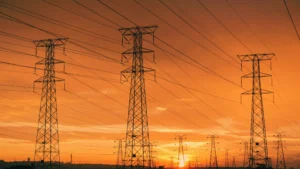How water utilities can build resiliency to mitigate supply chain disruptions
The U.S. has a water problem.
Its critical infrastructure is approaching the end of its 50- to 75-year life span. In 2020, 12,000 miles of aging pipelines needed replacing. Breaks are becoming more and more frequent. Every two minutes, a watermain breaks, with about 6 billion gallons of treated water being lost daily.
And those are just today’s problems.
The EPA reports that yearly between 2016 and 2026, approximately 10.6% of water sector workers will retire or transfer, and even as much as 50% of staff will retire between 2026 and 2031.
If that wasn’t enough, along with the rest of the world, the industry is experiencing serious supply chain disruptions. Placing the U.S. water system in a vulnerable position for timely maintenance and adequate levels of service. 72% of water utilities are facing supply chain difficulties when it comes to purchasing infrastructure components. Over 45% report issues with purchases of electronic equipment and chemicals. Many water utilities are struggling to buy computer chips for their water trucks, as well as other vital day-to-day supplies.
But utilities need to stop asking themselves how they can be more resilient during supply chain disruptions, and instead, ask how they can build long-term resiliency to mitigate the impacts of supply chain disruptions on an already stressed network.
Resiliency will look different for each utility, but we cover a few areas of focus for you to consider when ensuring your utility continues to supply clean, safe and reliable water.
Leveraging technology for long-term strategic planning
When it comes to critical infrastructure, proactive, timely and strategic interventions are key to ensuring ongoing resiliency and performance. You need to make the right decisions, at the right time. Aligning your short-term metrics with your long-term business vision through decisions that safeguard your utility against environmental and economic challenges, that allow you to build and maintain infrastructure for a sustainable future.
To take on a mandate of that size, you need data and technology on your side. From GIS, to IoT to capital planning software.
Capital planning software, like an Asset Investment Planning (AIP) solution, uses predictive analytics to help water utilities proactively anticipate and prioritize planning, risks, costs and levels of service amid aging infrastructure issues. Technology like this is designed to analyze eventual risks, uncertainties, constraints and trade-offs. With the insights derived from AIP, water utilities can make their budgets go further, optimize their workforce, as well as plan and support future supply chain contingencies.
But while technology is key, it’s important to remember there is no technology that can magically help you achieve resiliency. You need to have a long-term strategic plan in place, with clear objectives. You can then transform these objectives into measurable metrics, and use technology to turn those metrics into forecasts, that allow you to make data-driven decisions that support the long-term goals of your organization.
Resource investment and allocation
No one has a blank cheque ready to fix these critical infrastructure problems. Even though President Biden’s infrastructure bill is allocating $55 billion to drinking water, wastewater, and storm water funding to help resolve some of these issues. It won’t be enough to bring the entire network into the 21st century. So, utilities need to know exactly where they should be investing their dollars, what outcomes they expect from the investment, to make sure they get the greatest return on investment from each project.
Where do we start? Which pipelines need replacing first (based on cost, level of service and risk)? Do they need to be maintained or fully replaced? If a full replacement is the best option, what should they be replacing them with? What is the impact of each individual intervention on the network as a whole? The decisions I make today, how will they hold up in five, ten, fifty years?
There are a plethora of questions that teams need to answer, so they can work out the most optimal way of achieving their goals.
So, how can water utilities know if their resource investments are future proof? By digitizing their organizational knowledge and expertise, and then using technology to model, test and analyze it, so they can gain insights, eliminate doubt and plan contingencies.
Using what-if analysis, decision-makers can stress test their hypothesis under a myriad of scenarios, offering utilities the ability to anticipate, and plan around unexpected situations, so you can have a clear view of potential risks so they can build redundancy into their capital planning.
Shore up your supply chains in advance
What once took utilities three to six months to complete is now taking years because of low product stock, high demand and long delays in shipping. But supply chain issues ebb and flow and should always be accounted for as part of a water utilities risk management plan to ensure flexibility and readiness.
As infrastructure ages, overall planning timeframes need to adjust and the need for material to support replacements, repairs, maintenance and construction will all increase. Decision-makers will need to be mindful of this new reality, and plan for it both directly and indirectly with their partner ecosystems.
AIP solutions look at data trends to help water utility companies identify and plan for how long their assets will last. Possible risks like additional breakage, climate change and cost increases can also be factored through simulations. Water utilities can prevent situations where supply chain disruptions are anticipated, and repair parts planned accordingly ahead of time.
Lessons from the City of Montreal
Supply chain disruptions will continue to pose challenges to the industry. With water being a vital commodity, it is imperative utility companies adopt new solutions and resources for long-term planning and investment. Predictive analytics will help water utilities make sustainable and strategic decisions now and for years to come.
Asset management software can help any asset-intensive industry optimize their strategic planning to address any challenges. The City of Montreal was spending hundreds of millions of dollars annually on maintaining and renewing its water supply and wastewater infrastructure. After several decades of chronic underinvestment, they were faced with a significant maintenance deficit.
With the help of DIREXYON, they were able to analyze this deficit in relation to their desired levels of service, and quantify the resources and timelines required to reduce and manage this deficit.
Check out their results.



